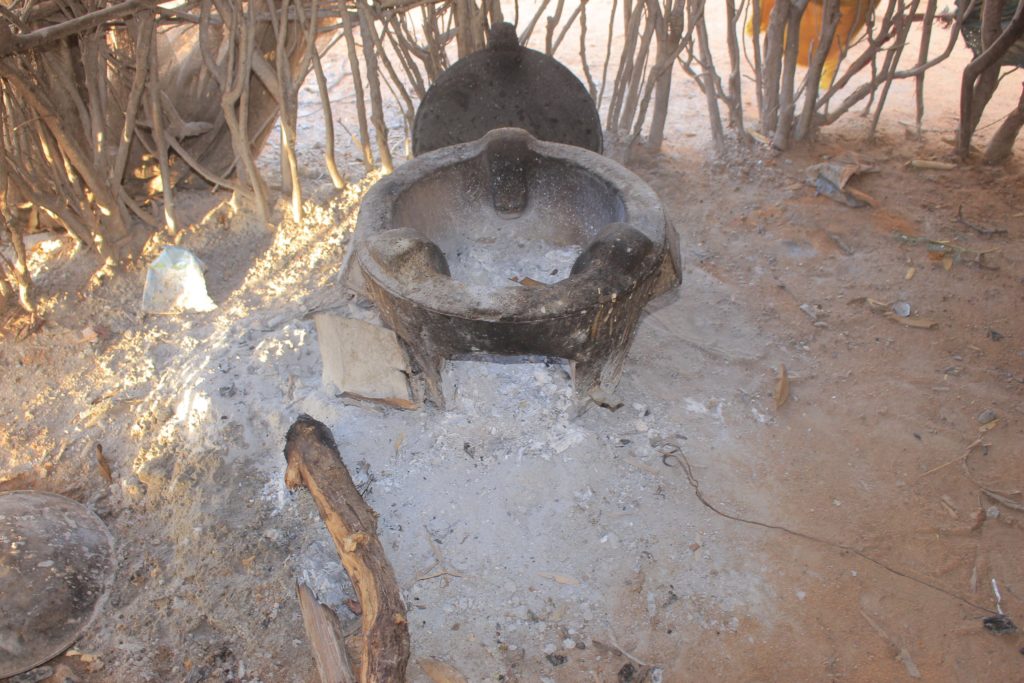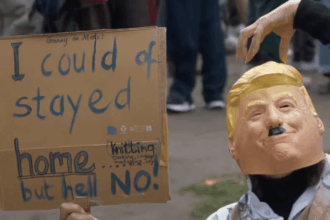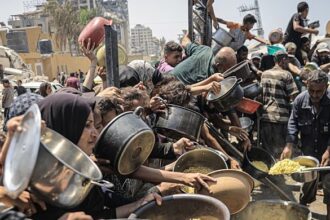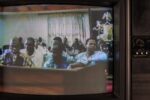Somali authorities and the international community have repeatedly failed to protect thousands of people from drought-affected communities in southern Somalia, exposing them to violations of their rights to food, water, family, health and life, Amnesty International said in a new report.
‘No rain, no food, no animals: The human rights impact of drought and displacement in Somalia’ documents how, between 2020 and 2023, climate change-related drought, coupled with conflict and marginalization, forced thousands of people to relocate to camps for internally displaced persons (IDPs) initially in southern Somalia and then to Dadaab Refugee Camp in Kenya. During these arduous journeys, the Somali authorities failed to provide relief, including health services and food.
Somalia is on the frontline of human-induced climate change. As the seventh most climate-vulnerable country in the world, Somalia’s authorities, with the support of the international community, must urgently address the marginalization of communities in southern Somalia who are acutely impacted by global warming caused mainly by fossil fuel combustion
Tigere Chagutah, Amnesty International’s Regional Director for East and Southern Africa
“Somalia is on the frontline of human-induced climate change. As the seventh most climate-vulnerable country in the world, Somalia’s authorities, with the support of the international community, must urgently address the marginalization of communities in southern Somalia who are acutely impacted by global warming caused mainly by fossil fuel combustion, said Tigere Chagutah, Amnesty International’s Regional Director for East and Southern Africa region.
“Somalia’s contribution to global warming is negligible, yet its people are bearing the brunt of the climate crisis, while also facing long running conflict and poverty. High income countries, especially those most responsible for climate change, must step in and meet their obligations to support Somalia in adapting to the effects of climate change.”
The report is based on interviews carried out between September 2024 and March 2025, with 177 people displaced into Dadaab Refugee Camp. Amnesty also interviewed emergency service providers, humanitarian workers, government officials, and climate change experts who either work in Somalia or have knowledge and experience of the country’s vulnerabilities to drought and climate change.
“Everything dried up”
Persistent drought in southern Somalia since 2022, made worse by human induced climate change, has combined with several other factors such as continued conflict to drive mass displacement. With water sources drying up, people have been forced to drink contaminated water, fostering the spread of water-borne diseases including cholera. The scarcity of local health facilities forced people to travel up to 1000km for treatment.
The drought also caused food prices to rise by up to 160% above pre-2020 levels across Somalia. This, coupled with depleted food stores, dry farmlands and reduced incomes, made food unavailable and inaccessible, resulting in rampant malnutrition and food insecurity, driving further displacement. The drought was eventually declared a national disaster in November, 2021.
Despite this growing health crisis, Somalia has failed to fulfil its human rights obligation to guarantee the rights of drought-affected individuals by not increasing its allocation to the health budget – which is currently less than 5% of overall government expenditure – to 15% as set out in the Abuja declaration, a commitment by African Union countries including Somalia to increase national health budgets.
“Limited resources and the ongoing conflict are not an excuse to neglect international obligations and necessary government action; Somalia erred by folding its hands. Having declared the drought a national disaster, authorities should have ensured there were enough resources to protect drought affected people, including by seeking extra international assistance,” said Tigere Chagutah.
Fadumo*, a 53-year-old mother of eight from Xabaalo Barbar in Baydhabo District, told Amnesty that after years of erratic rainfall and drought, she abandoned her farm and moved to an IDP camp in the capital Mogadishu because she had no food and water. The only available water, which was dirty and salty, was from a well 24 hours away on foot or donkey cart. After being unable to find work in Mogadishu, she moved to Dadaab.
Amnesty found that the Somali authorities failed to prevent family separation and the abandonment of children, older people and people with medical conditions during drought-induced displacement.
Bile*, a 33-year-old farmer and father of eight from Fargarow in Jilib, explained how his parents died after he had to move to Dadaab:
“When the drought came, everything dried up. I had eight children, a wife and my parents who were old and relied on me. So, when the drought came, we quickly finished the food that we had stored. I decided to move with my children and wife in 2023. However, since I was their only provider, my parents succumbed to the famine after I left them in Jilib.”
Due to the lack of early warning systems, floods also destroyed grains stored underground resulting in even greater food insecurity during the drought.
When the drought came, everything dried up. I had eight children, a wife and my parents who were old and relied on me. So, when the drought came, we quickly finished the food that we had stored. I decided to move with my children and wife in 2023. However, since I was their only provider, my parents succumbed to the famine after I left them in Jilib.
Bile*, a Somali farmer
“The Somali authorities must urgently come up with climate change resilience policies that also address the resulting loss and damage as witnessed among the most vulnerable communities in southern and central Somalia,” said Tigere Chagutah.
Multiple displacements
Many IDPs said they had been displaced more than once, initially into IDP camps or informal settlements within southern Somalia, where some government services were available and some NGOs were present. However, with many of these sites located in areas of high climate vulnerability, further displacements occurred due to drought or floods.

As the number of IDPs in southern Somalia soared, humanitarian actors lacked adequate resources to address their needs, forcing IDPs to move to Dadaab.
The journey to Dadaab on the Somalia-Kenya border is long and arduous. Depending on the mode of transport it can take anywhere between two days to six weeks. Those with resources could board or hire vehicles. However, the fares are exorbitant and out of reach for many, with some families telling Amnesty International that they had to sell household items, livestock, grains or even land to afford fares.
Having declared the drought a national disaster, authorities should have ensured there were enough resources to protect drought affected people, including by seeking extra international assistance.
Tigere Chagutah
Services from humanitarian organizations and government departments along the transport routes were largely absent, with the limited assistance available appearing to be centralized around settlements and IDP camps and not along transport corridors. This is despite Somalia’s obligations under its constitution and international law, including under the Kampala Convention, to protect those displaced by climate change.
Abdullahi, who travelled from Saakow in Somalia to Dadaab, said:
“When we got to Dhobley, well-wishers picked 15 women and children and gave them a lift in their vehicle to Dadaab. The men were left behind to walk with the donkey carts. We carried sorghum [a type of grain] and water for the children, but they were extremely malnourished on arrival because what we had only lasted a few days.”












